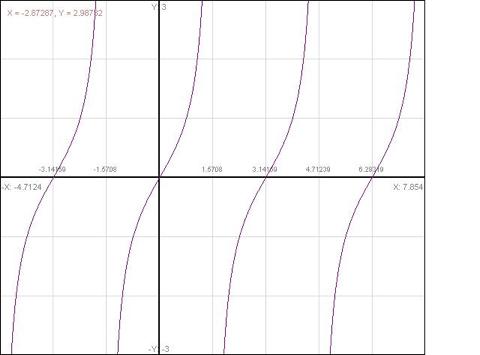(New page: == Part A: Periodic Signals Revisited == By sampling a CT periodic signal at different frequencies, one can produce both a periodic and non-periodic DT signal. I chose to use the tangent ...) |
|||
| Line 9: | Line 9: | ||
<center>[[Image:tangent_ECE301Fall2008mboutin.jpg]]</center> | <center>[[Image:tangent_ECE301Fall2008mboutin.jpg]]</center> | ||
| + | |||
| + | By sampling the signal with x[n]=tan[k+n] and k=1.5, it is possible to produce a non-periodic DT signal. | ||
| + | |||
| + | [[Image:tan_nonperiodic_ECE301Fall2008mboutin.fig|300px|frame|center]] | ||
Revision as of 10:25, 11 September 2008
Part A: Periodic Signals Revisited
By sampling a CT periodic signal at different frequencies, one can produce both a periodic and non-periodic DT signal. I chose to use the tangent signal from Homework 1.
$ \tan\theta = \frac{\sin\theta}{\cos\theta}\, $

By sampling the signal with x[n]=tan[k+n] and k=1.5, it is possible to produce a non-periodic DT signal.

